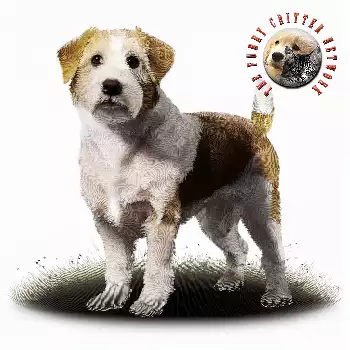The behavioral characteristics of the Lander reflect decades of selective breeding for the ideal companion dog temperament. These dogs exhibit a remarkable balance of intelligence, sensitivity, and adaptability that makes them uniquely suited to modern family life. Their behavior patterns demonstrate a deep understanding of human emotions and social dynamics, allowing them to integrate seamlessly into family routines while maintaining their own distinct personality.
One of the most notable behavioral traits of the Lander is their intense devotion to their human family, particularly their tendency to form an especially strong bond with one family member. While they remain friendly and affectionate with all family members, they often choose a "special person" who becomes the center of their world. This person-focused behavior stems from their breeding as companion dogs and reflects their desire to form deep, meaningful relationships rather than casual associations.
Intelligence manifests in the Lander through their remarkable ability to learn and adapt to complex household routines. They quickly understand family schedules, anticipate daily activities, and adjust their behavior accordingly. This cognitive flexibility allows them to be calm and quiet when the household is subdued, then shift to playful and energetic modes when the family is ready for interaction and activity.
The breed displays what can best be described as emotional intelligence – an ability to read human moods and respond appropriately. Landers seem to sense when their owners are stressed, sad, or upset, often responding by offering comfort through gentle physical contact or simply remaining quietly nearby. Conversely, they recognize and participate in family excitement, celebrations, and playful moments with appropriate enthusiasm.
Sensitivity represents both a strength and a consideration when dealing with Landers. These dogs respond poorly to harsh training methods or excessive pressure, instead thriving under patient, positive approaches that respect their gentle nature. Their sensitivity extends to environmental factors as well – they may be affected by household stress, changes in routine, or conflict between family members, often displaying this through subtle changes in appetite, sleep patterns, or general demeanor.
Social behavior with strangers demonstrates the breed's natural caution without aggression. Landers typically observe new people carefully before deciding whether to approach or maintain distance. They're rarely aggressive or fearful, instead displaying a polite reserve that can evolve into friendliness once they've determined that a stranger poses no threat to their family. This discriminating approach to new relationships makes them excellent judges of character.
Play behavior in Landers is characterized by enthusiasm and intelligence rather than overwhelming intensity. They enjoy interactive games that challenge their minds, such as puzzle toys, hide-and-seek, and learning new tricks or commands. Their play style tends to be collaborative rather than competitive – they prefer games that involve cooperation with their human partners rather than purely independent activities.
Communication is an area where Landers excel, using a combination of vocalizations, body language, and facial expressions to convey their needs and emotions. They're not typically excessive barkers, but they use their voices purposefully to alert, request attention, or express excitement. Their expressive faces and mobile ears contribute to their communication repertoire, often making their intentions and feelings quite clear to observant owners.
The breed's adaptability extends to their living arrangements and lifestyle adjustments. Landers can transition from quiet apartment living to active suburban life with remarkable ease, adjusting their activity levels and behavioral patterns to match their environment. This flexibility makes them suitable for various family situations, from young couples to families with children to senior citizens seeking companionship.
Routine-oriented behavior is common among Landers, who often establish and prefer predictable daily patterns. They typically thrive when meals, walks, play sessions, and rest periods occur at consistent times, though they can adapt when necessary changes occur. This preference for routine may stem from their sensitivity and their desire to understand and anticipate their family's needs.
Learning behavior in Landers is characterized by thoughtfulness and retention. They often observe new situations carefully before acting, preferring to understand what's expected rather than attempting trial-and-error approaches. Once they've learned something, they tend to remember it well, making training a cumulative process that builds upon previous lessons.
Attention-seeking behavior is generally moderate and appropriate in well-socialized Landers. They enjoy being the center of attention but rarely demand it inappropriately. Instead, they often position themselves where they can observe family activities and be available for interaction when invited. This balanced approach to attention-seeking makes them pleasant household companions who add to family life without becoming overwhelming or demanding.
Stress responses in Landers are typically subtle and may include withdrawal, changes in eating patterns, or increased clinginess to their favored family member. Understanding these behavioral signals helps owners identify when their dog needs additional support, environmental changes, or potentially veterinary attention if stress-related behaviors persist.

